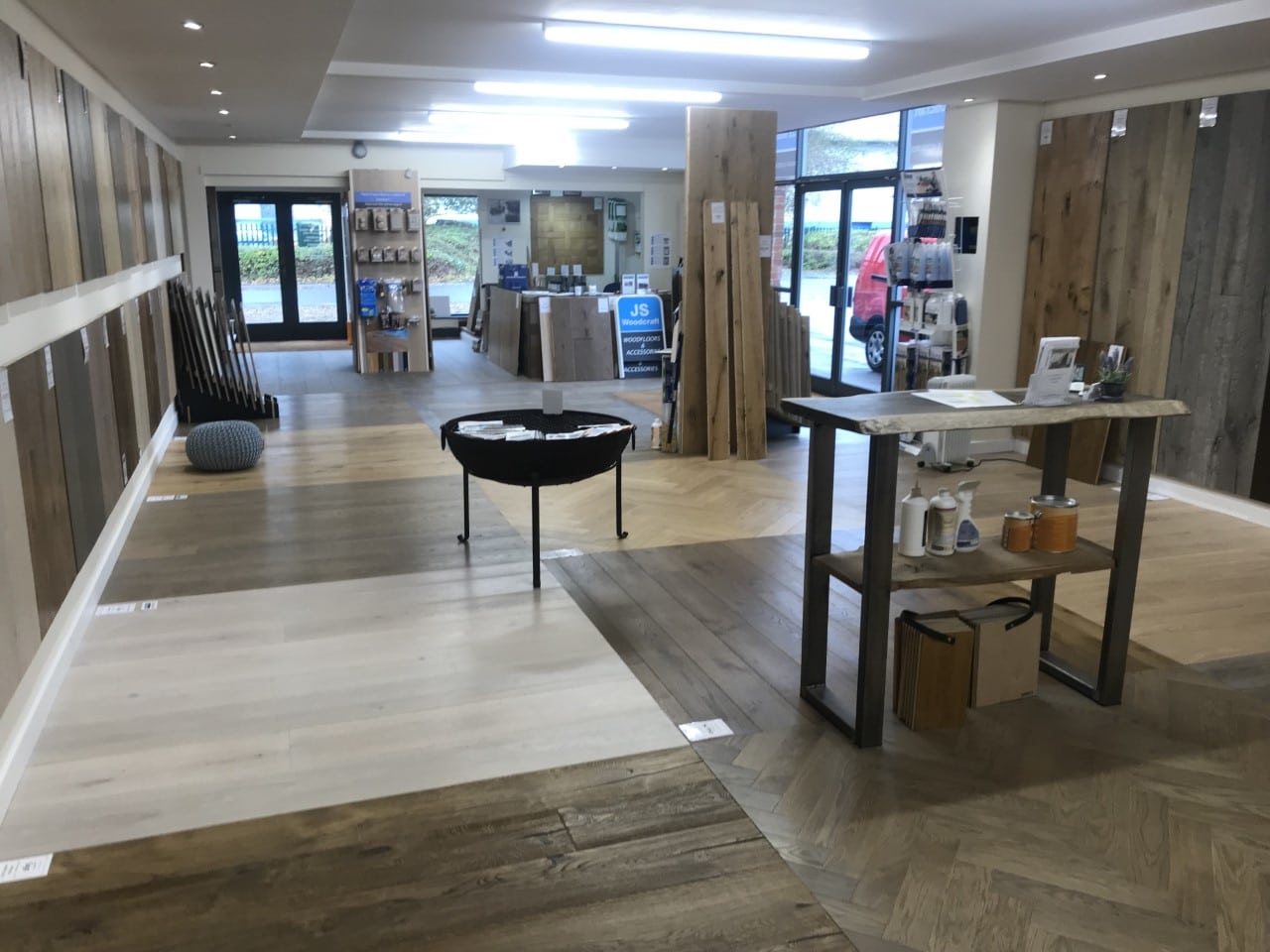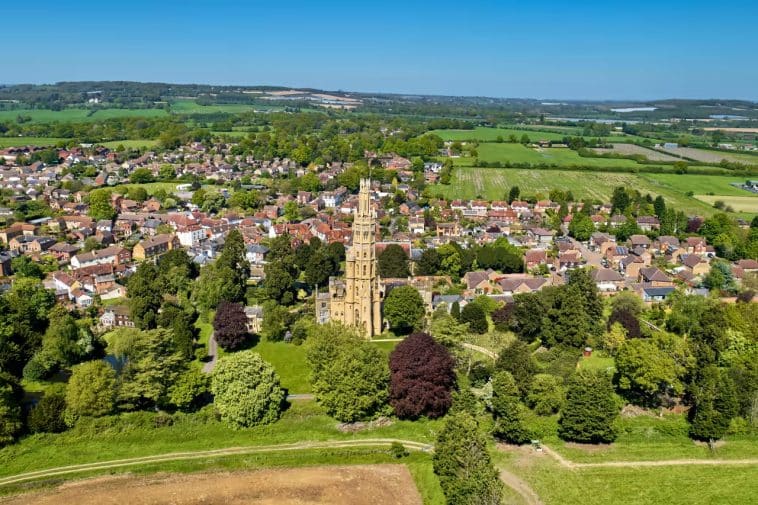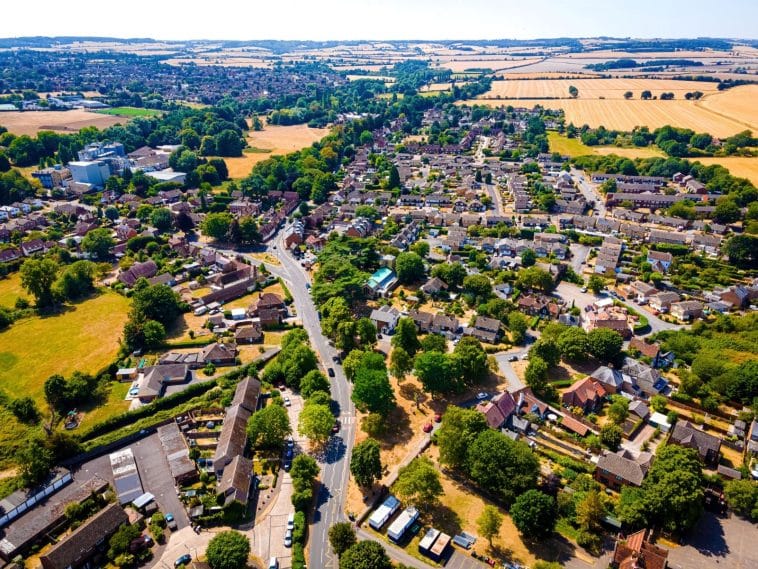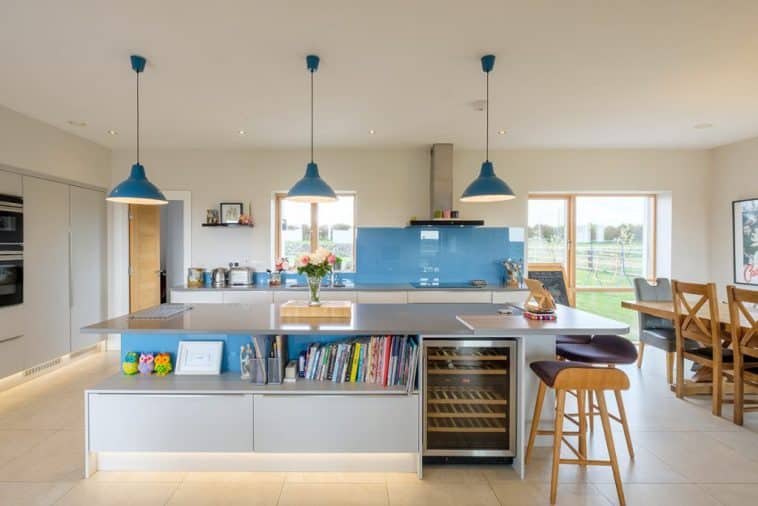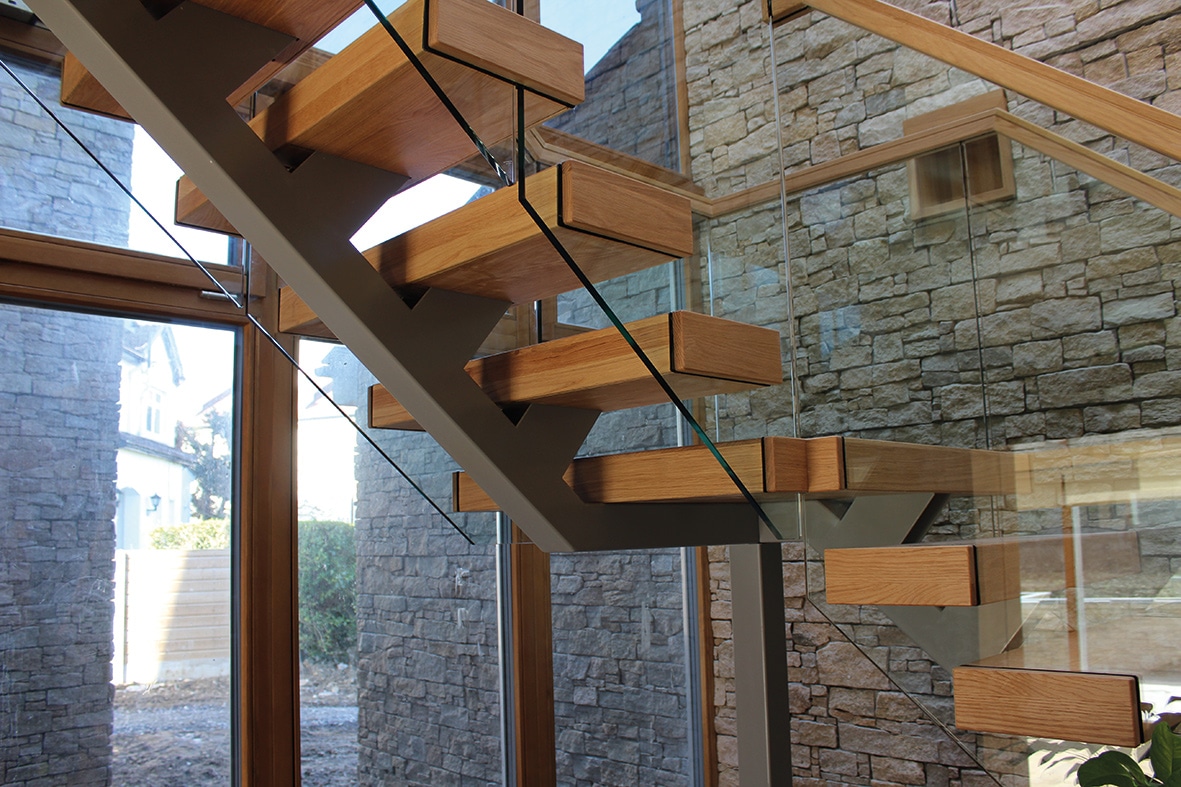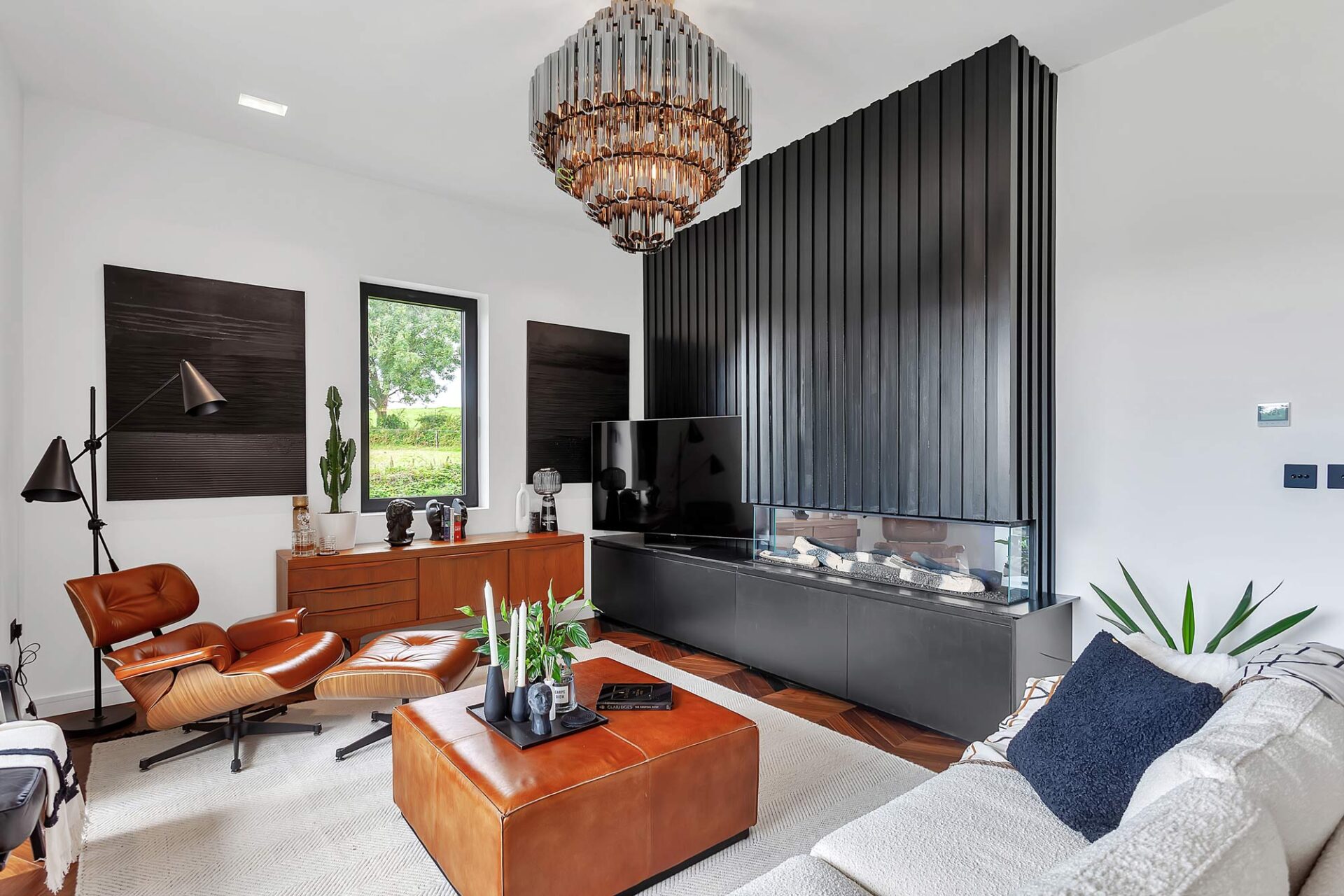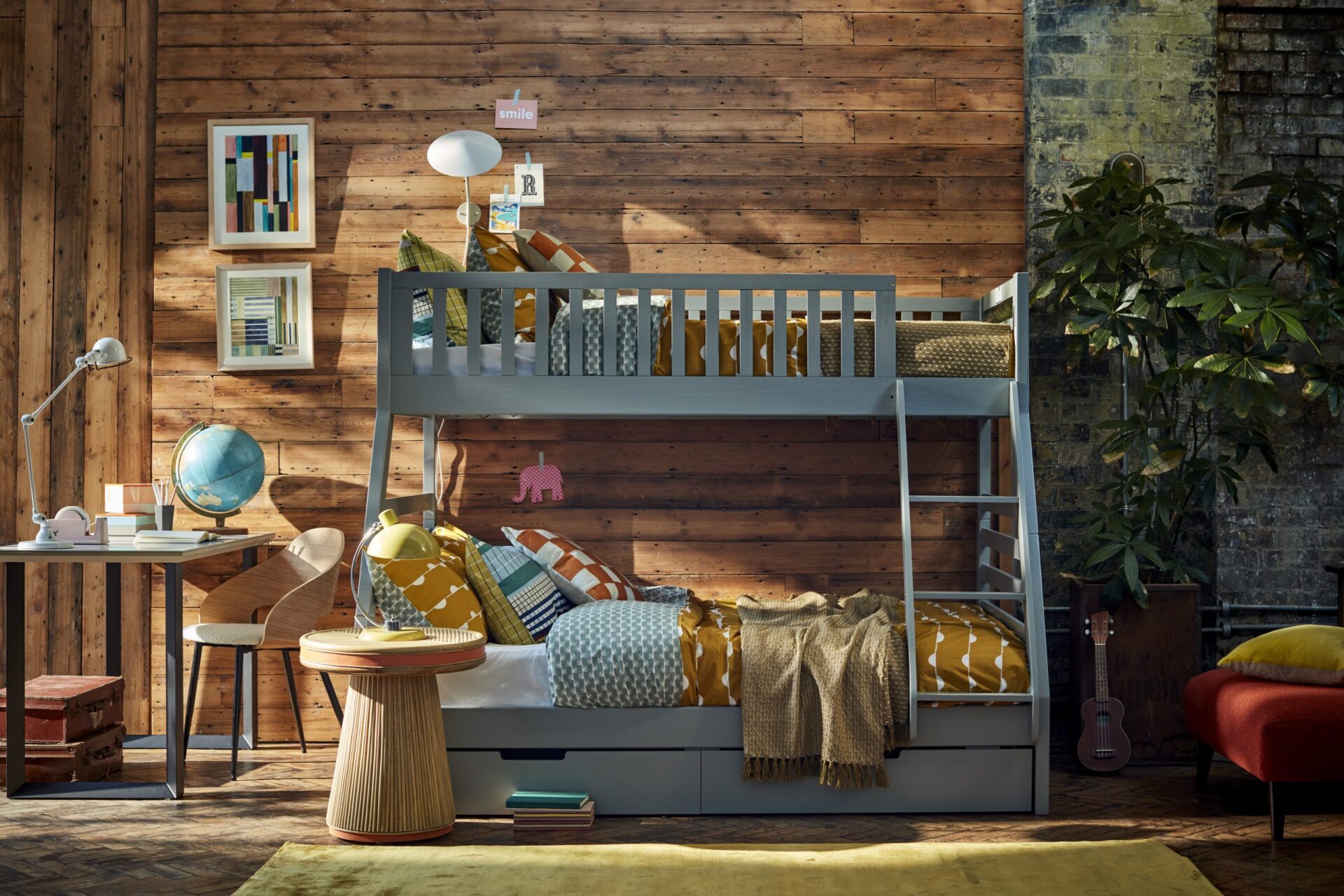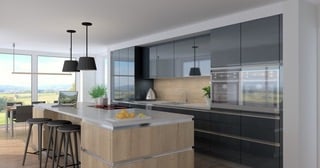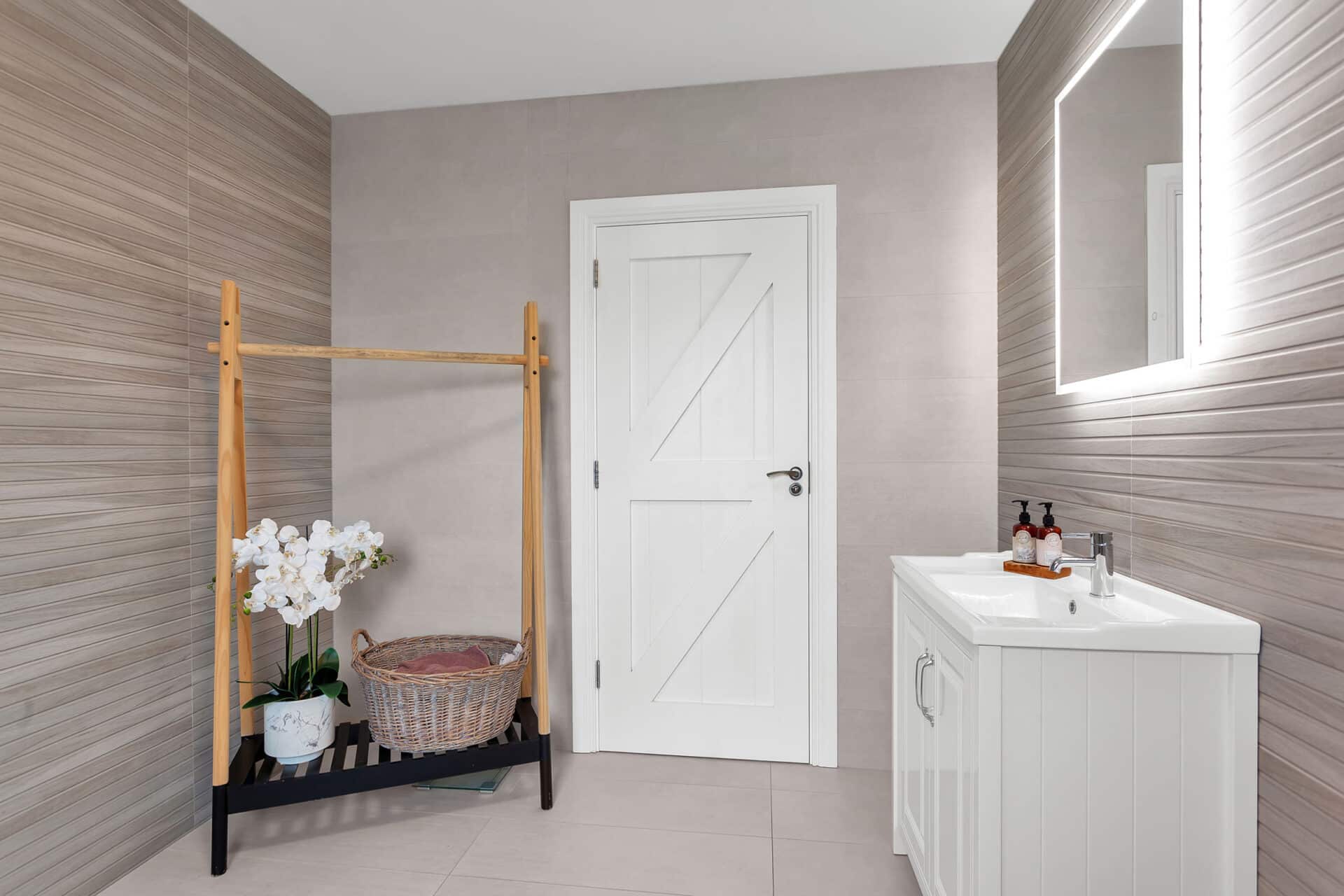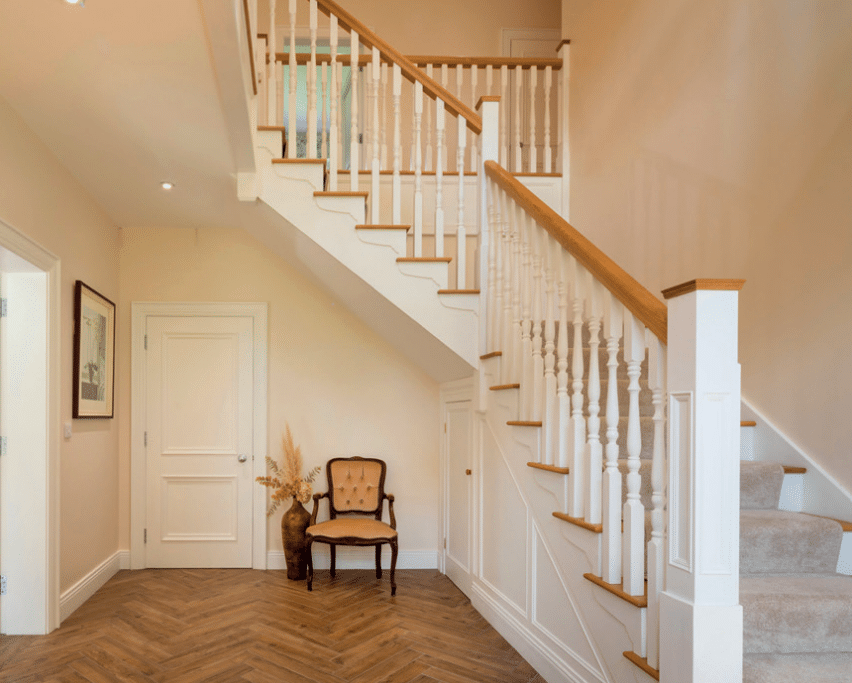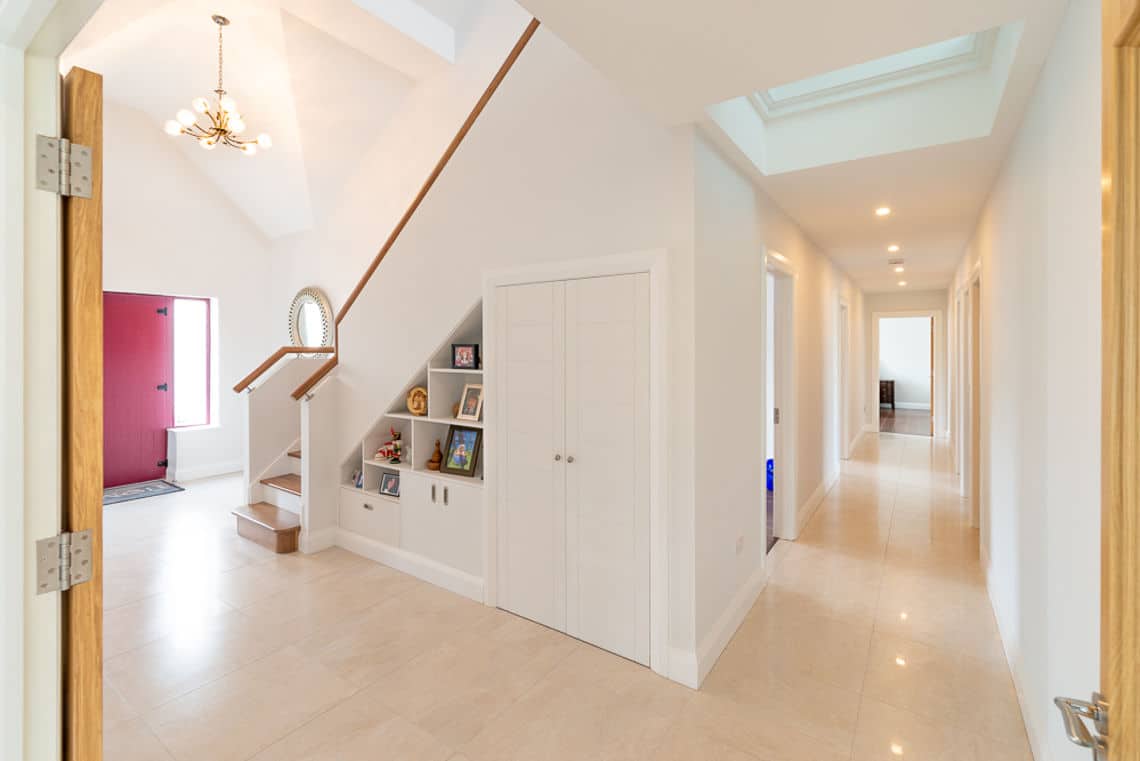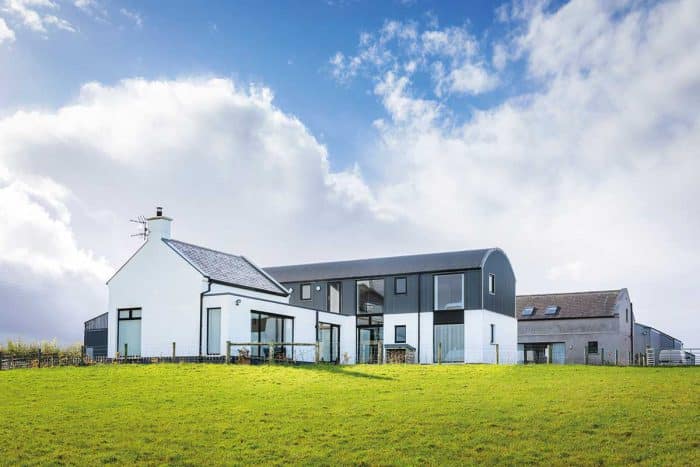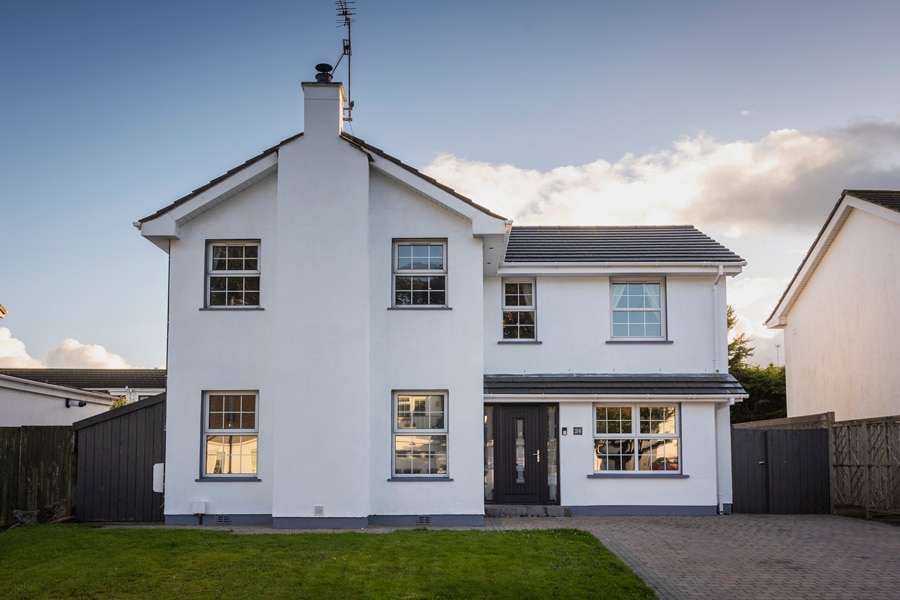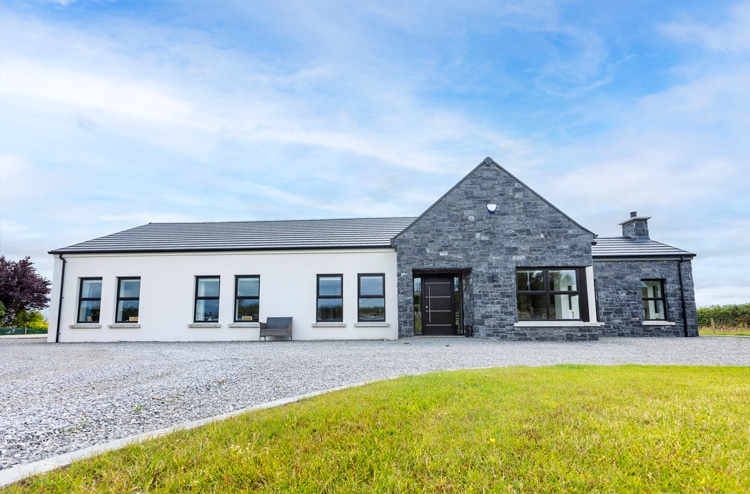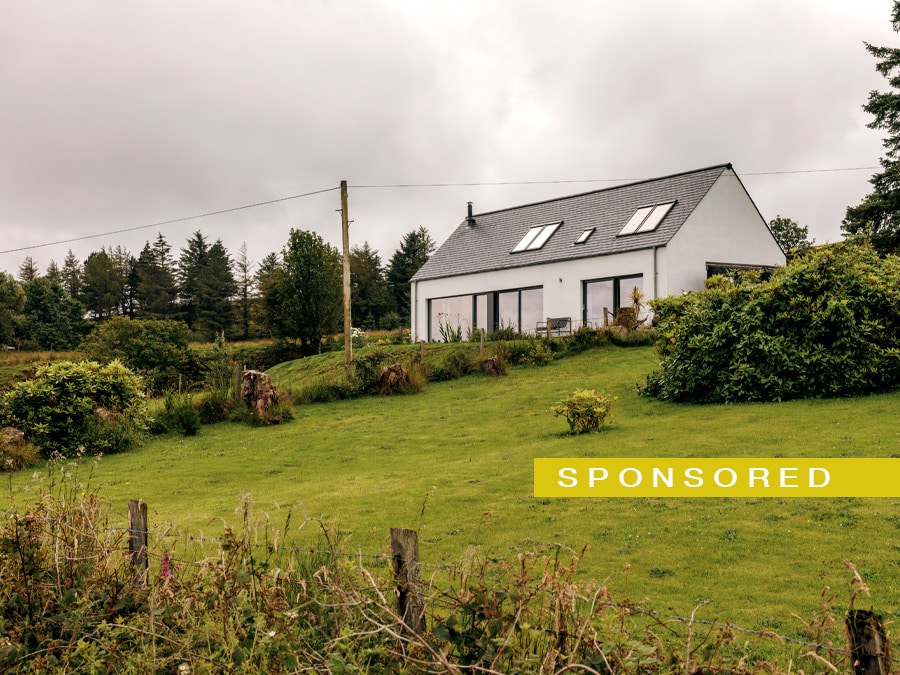Your ultimate guide to the floor coverings options available in Ireland today for your new build or renovation project.
In this article we cover:
- What to consider when choosing floor coverings
- Wood type flooring
- Tiles
- Carpets and rugs
- Vinyl/PVC, linoleum and rubber flooring
The floor covering you choose has to first and foremost look good, but almost equally important, must wear well, match the furniture, complement the décor, be comfortable to walk on and cope with whatever you, your family, friends and visitors do to it…within reason. A tall order, but to be successful, what goes underfoot must fulfil all of these ‘needs’. Here’s a look at the options available today, from hard to soft floor coverings.
Today the rooms in our houses are multi-functional. Some are completely open plan with only bedrooms and bathrooms divided from the space, an arrangement that can either dictate the floor covering, or, conversely, separate different functional areas by changing the floor surface. For example, the working area of the kitchen might have a hard surface, but where the table and seating are, a softer material gives a more relaxed feel. Or you may opt to combine the two and install hard flooring throughout, combined with rugs.
Note that you should decide on your floor coverings early on in the design process – the final floor surface must allow for the varying thickness of ceramic tiles, hardwood or laminate flooring, carpet and underlay or vinyl. For example, carpets may need to have a 10mm to 15mm foam underlay with a 15mm to even 20mm for a deep fibre top surface, making up to 35mm total thickness. If this is to join a 10mm ceramic tile laid on a few millimetres of adhesive, there is a difference of perhaps 20mm. Moulded timber or metal threshold plates provide a sloping border between the two; a small detail perhaps, but essential to the efficient functioning of the overall floor!
Also, it’s important to note that in Ireland, the environmental focus with regards to floor coverings has primarily been sustainable forestry, not so much indoor air quality (IAQ). But there are European standards that tackle these issues, and rate products according to how hard wearing they are and also the level of volatile organic compounds (VOCs) emitted. The CE marking, which is a requirement for any product to be sold within the EU, basically tells you that your floor covering abides to a harmonised standard. For carpets, laminate flooring, vinyl, rubber and linoleum, it’s EN 14041; for solid or engineered wood flooring it’s EN 14342; for natural stone flooring it’s EN 12058 (man made stone flooring EN 15285) and for ceramic tiles it’s EN 14411. A CE marking means the product is reasonably fire resistant, durable, and is deemed safe on the VOCs front (low pentachlorophenol (PCP) content and low formaldehyde emissions). For carpet underlays the standard is EN 14499; in the case of underlays for engineered wood or laminate flooring you can turn to ISO certification schemes, e.g. quality assurance EN ISO 9001: 2008.
Before we delve into the most common floor covering types, why not consider ‘going bare’? In old buildings, flagstones or quarry stones used to be directly laid onto the ground, which has its charms, but in new builds this is no longer possible due to the building regulations stipulating that the floor be properly insulated. So nowadays the only way to allow your ground floor to ‘go bare’ is if you opt for a purpose-built earthen floor (a mix of lime, clay and other components, including straw and linseed oil built on top of the weatherproofed and insulated floor base), exposed concrete or a resin flooring.
Exposed concrete is not particularly popular in Ireland and finding skilled labour to properly mix, pour and polish off the concrete may not be the most straightforward of tasks. The options here consist of specifying that the concrete be either tinted beforehand (add colour of your choice, although different batches of concrete will give slightly different colour due to how the mix sets and different exposure to light), its mix altered (to give it whiter or greyer look, e.g. use GGBS cement for whiter finish), or decorative aggregates such as quartz, marble or granite, can be added to the mix (some sort of polishing will be required to expose these materials in the finished product, e.g. sandblasting, chemical treatment, etc.). Another option is to simply paint the bare concrete floor as you would with floorboards. The benefit of using a concrete floor is that it will act as a thermal store (keep heat in during day and release it at night) so is energy efficient; also works well with underfloor heating.
Wooden flooring
Types
Wooden floors are either solid (planks made from one piece of wood), engineered (‘semi-solid’) or laminate (not solid – chiefly made of fibreboard). Most come in either tongued and grooved boards, which are fixed, sanded, stained and sealed, or a laminate bonded to a base layer of board.
There are many types of solid wood (hardwood or softwood) on the market, oak being the most popular, although our demand for something different in the world of interiors has led us towards the tropical forests of South America, Africa and the Far East. The different ‘looks’ available from these tropical woods is truly amazing, think of Zebrano for example. Each species has a unique colouration that can be tinted by treating them or by adding stains, oils or lacquers. As a result, oak from the Siberian or Chinese forests, which used to get passed over due to its weak colouration, has started to gain market share.
Bamboo is the hardest natural material with a higher fibre rating than hardwood, giving it a very long life. Suitable for use in wet areas, it is available in either flat grain or cross-grained panels. It is a widely used product in the UK and US, but perhaps not so popular in Ireland despite its versatility. Bamboo is essentially grass which, under the right conditions, grows faster than any lawn in Ireland could! It is widespread around Asia and its use extensive there.

